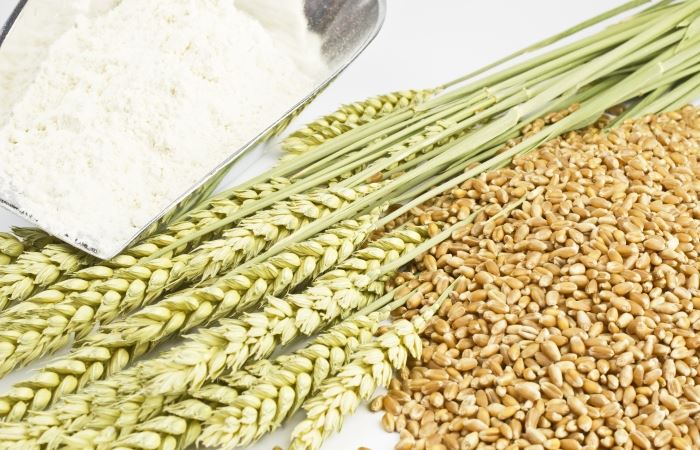Treatment of wheat allergy
In simple terms, wheat allergy should only require the avoidance of wheat and wheat containing products. However, the possibility of cross-reaction with other cereals and plants must be considered, particularly in the management of an IgE-medicated allergy.
Individuals with wheat allergies may also cross-react with grass pollen, rye and barley. Studies looking into the cross-reactivity between wheat, rye and barley, found cross-reactivity in approximately 25% - 55% of individuals with wheat allergy. Even though these cross-reactions do not exists in all cases, it clearly problematic for some [1,2]. Therefore, wheat allergy, patients may be advised to avoid rye and barley in addition to wheat.
Wheat can be cross-contaminated with other grains during manufacturing. However, the clinical implications of this for both IgE and non-IgE mediated wheat allergy (apart from celiac disease) is not clear. Due to the ubiquitous use of wheat in many processed and packaged foods, using only naturally wheat free foods may limit both the variety and nutritional adequacy of the diet. Avoiding foods that state “may contain traces of wheat” is another highly debated point in food allergy. Having to avoid all products containing warnings of “may contain” may have a financial impact and also affect quality of life. The decision on whether to adopt a more restrictive approach such as this will be based on factors including:
Wheat can be cross-contaminated with other grains during manufacturing. However, the clinical implications of this for both IgE and non-IgE mediated wheat allergy (apart from celiac disease) is not clear. Due to the ubiquitous use of wheat in many processed and packaged foods, using only naturally wheat free foods may limit both the variety and nutritional adequacy of the diet. Avoiding foods that state “may contain traces of wheat” is another highly debated point in food allergy. Having to avoid all products containing warnings of “may contain” may have a financial impact and also affect quality of life. The decision on whether to adopt a more restrictive approach such as this will be based on factors including:
- Severity of past reactions
- Amount of wheat reacted to in the past
- Co-existing asthma
- Severity of other food allergy
Labelling
In 2004, the Food Allergen Labelling and Consumer Protection Act (FALCPA) was passed by Congress. FALCPA was an amendment to the Federal Food, Drug, and Cosmetic Act which requires that all major food allergens be listed on a food label. FALCPA identified wheat as one of the eight major food allergens. A study conducted by the FDA in 1999 before the allergen labeling act found that 25% of foods sampled did not indicate the presence of peanuts or eggs in the ingredient list, even though the food contained them. FALCPA was passed by Congress so individuals with food allergies could identify safe foods from reading the ingredients on a label. Looking for a gluten-free labeled product would also ensure that the product was wheat free.Advice regarding wheat free diet
A consultation with a specialist dietitian is the cornerstone of treatment for the individual on a wheat free diet. The dietitian can guide your patient through the issues of label reading, dinning out, supplementation, and planning a nutritionally balance intake. Follow this link to practice tips.Alternative Grains
There are many grains and foods that naturally do not contain gluten and can be safely consumed by individuals with celiac disease. The naturally gluten-free grains include rice, corn, buckwheat, millet, amaranth, oats, quinoa, tapioca, sorghum and teff. Additionally plain potatoes, legumes, many dairy products, meat, fish, poultry, eggs, oils, fruit and vegetables are naturally gluten-free. A healthy balance diet can be created using these naturally gluten-free foods.
There is also a wide range of commercially prepared gluten-free products including mixes, bread, pasta, cookies, crackers, cereals, etc. These manufactured products can be identified by the "gluten-free" designation on the packaging. The notation of gluten-free by US or Canadian regulations ensures that the product does not contain more than 20 ppm gluten threshold.
There is also a wide range of commercially prepared gluten-free products including mixes, bread, pasta, cookies, crackers, cereals, etc. These manufactured products can be identified by the "gluten-free" designation on the packaging. The notation of gluten-free by US or Canadian regulations ensures that the product does not contain more than 20 ppm gluten threshold.
References
- Jones SM, Magnolfi CF, Cooke SK, Sampson HA. Immunologic cross-reactivity among cereal grains and grasses in children with food hypersensitivity. J Allergy Clin Immunol 1995; 96:341-51.
- Pourpak Z, Mesdaghi M, Mansouri M, Kazemnejad A, Toosi SB, Farhoudi A. Which cereal is a suitable substitute for wheat in children with wheat allergy? Pediatr Allergy Immunol 2005; 16:262-6.
www.drschaer-institute.com

